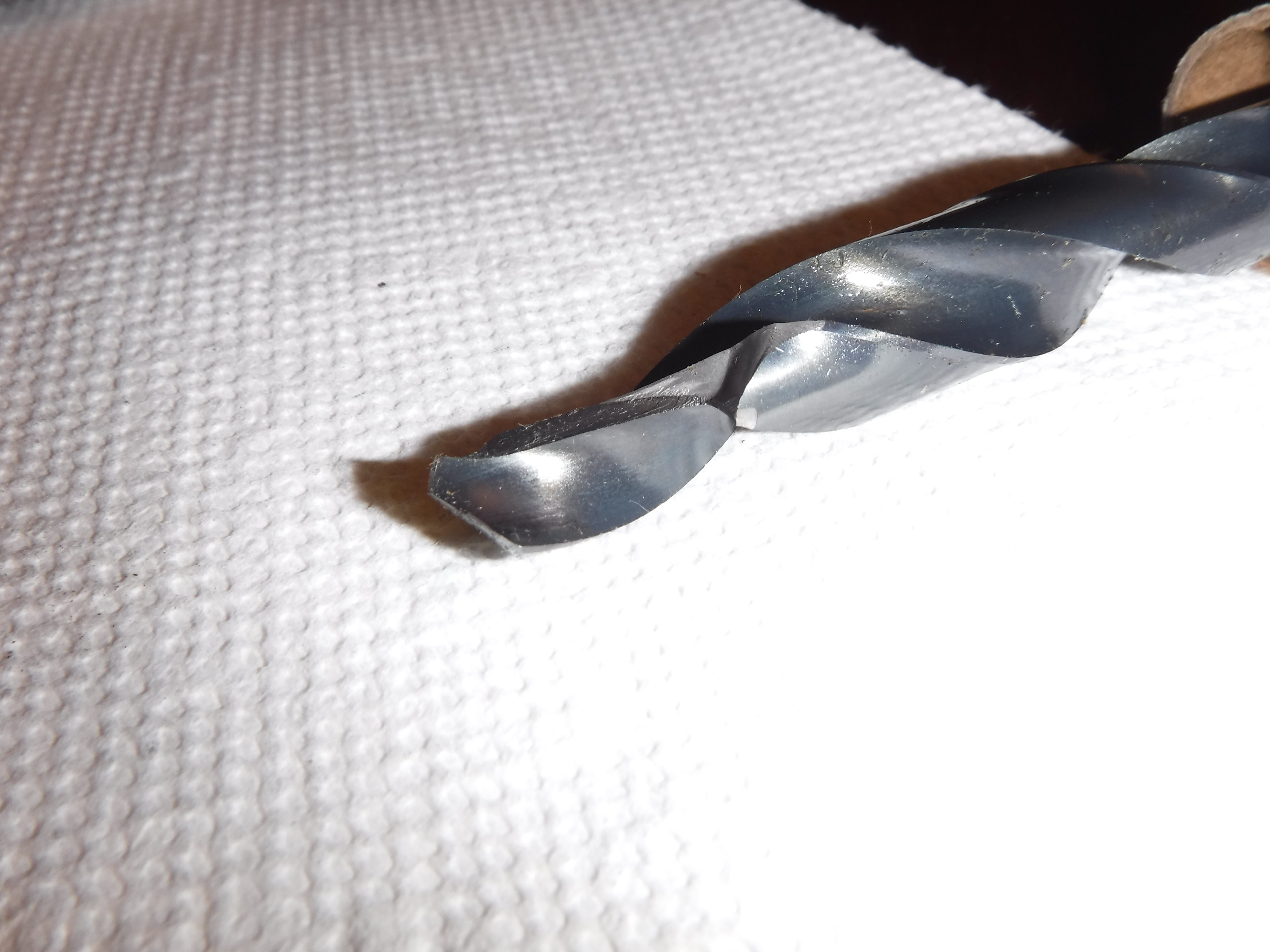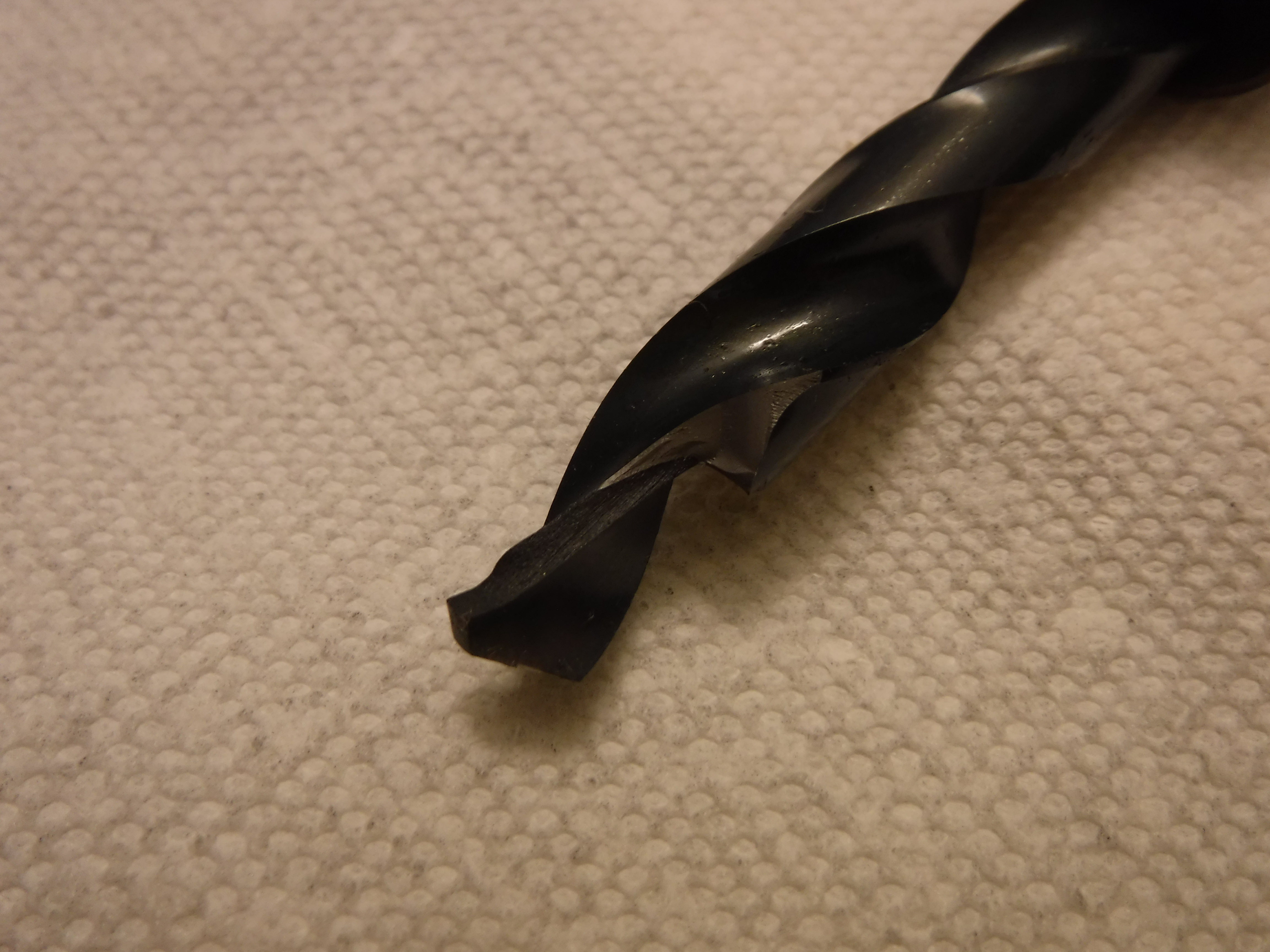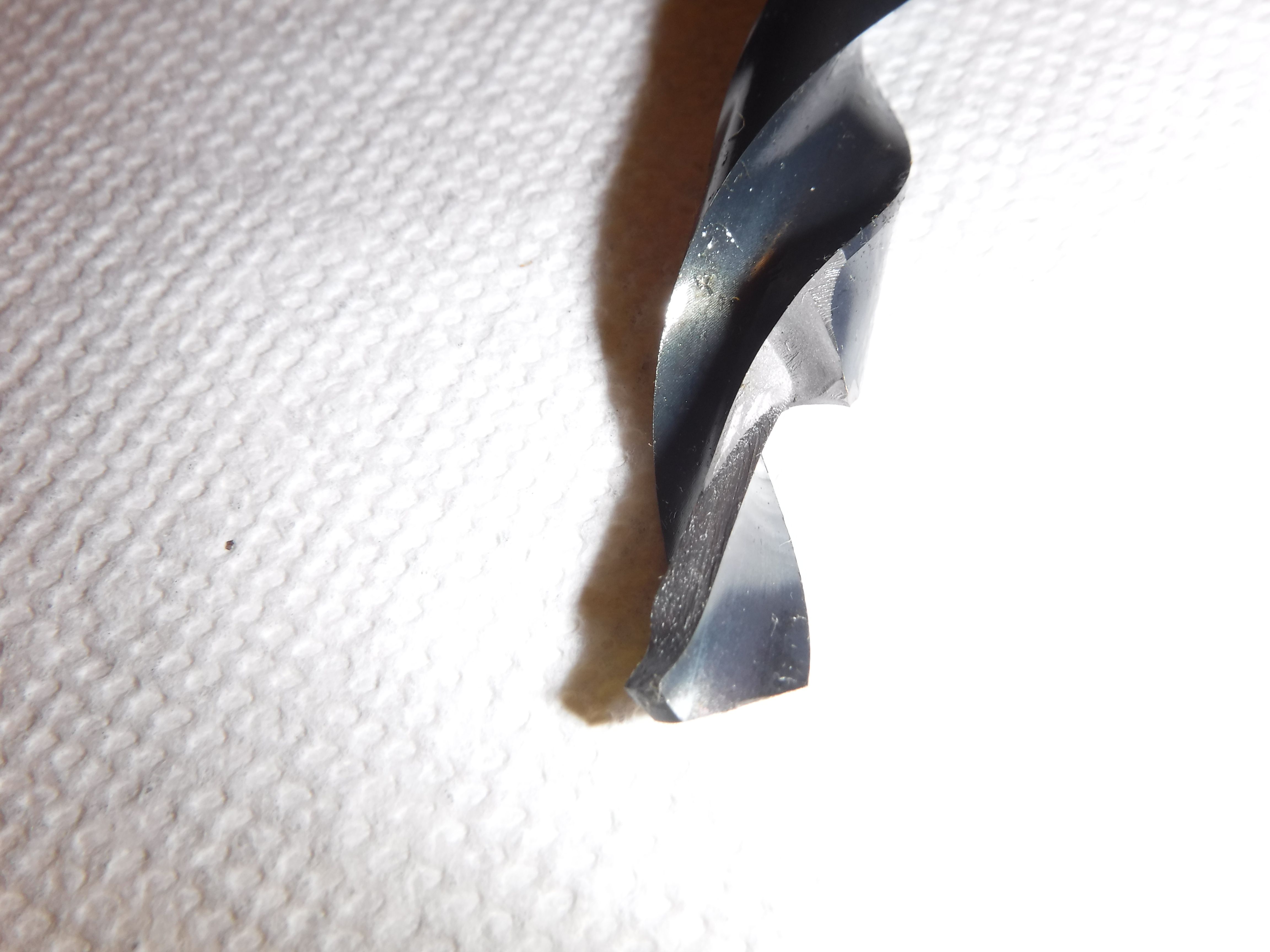Here's my opinion and I'm sticking to it (until you guys show me I'm wrong). The drill had a clean break, the dark discoloration is from contamination of the cutting fluid. When a drill chatters like that the drill is loaded up and then snaps against the rotation when it finally cuts the metal and then loads up again to start the process over. Most likely there was defection in the drill that cause one flute to dig in and take all the load causing a rotating action on that flute. On my lathe there was excessive play in the pin that keeps the tailstock spindle from rotating and it would chatter like that, I'm not saying that is your cause but something to check. How to cure? I have never tried it but the piece of cloth wold be easy to try, next make sure the SFM is correct and if nothing else load the drill up. Once the drill gets in deep enough the hole sill help support the drill.
-
Welcome back Guest! Did you know you can mentor other members here at H-M? If not, please check out our Relaunch of Hobby Machinist Mentoring Program!
You are using an out of date browser. It may not display this or other websites correctly.
You should upgrade or use an alternative browser.
You should upgrade or use an alternative browser.
What happened? Broken bit...
- Thread starter cdhknives
- Start date
- Joined
- May 4, 2015
- Messages
- 3,583
It's hard to tell , I've found where the drill bit unravels well in pictures never to me. Broke them yes just the way these guys say. But I've cut off the broke parts resharpened the bit and it's never broken again. Sometimes I think the ends get to hard and snap easy. Why they do , don't know. I had a tap snap just falling on the floor. Figure that out.
- Joined
- Feb 1, 2018
- Messages
- 1,868
Everyone makes mistakes and possibly the guy who heat treated the drill bit was having a bad day or was hung over and let the temp get a bit to high and the drill got brittle. The picture the OP shows with the end of the shaft with the notches appears to me the drill was sharpened wrong or the tailstock was not tight and slipped backward. To the OP have you drilled another hole and had the same problem after?
Ali
Ali
- Joined
- Apr 12, 2013
- Messages
- 562
The initial 1/4" hole cut like butter. No smoke with the dark cutting oil even. It was a brand new Cleveland cobalt bit...so better quality probably.
After the break I switched to a larger bit (11/16), slowed down the spindle a notch, and completed the bore about 3/4" deep. The bit would squeak some but no other issues once it was fully engaged.
I need very good concentricity in this part, a skirted 60 degree hollow cone with 1/4" hole in the narrow end and thin walls, so I was trying to step up in small steps...maybe not the best idea. The rest will be 7075 Al so they should machine easier.
After the break I switched to a larger bit (11/16), slowed down the spindle a notch, and completed the bore about 3/4" deep. The bit would squeak some but no other issues once it was fully engaged.
I need very good concentricity in this part, a skirted 60 degree hollow cone with 1/4" hole in the narrow end and thin walls, so I was trying to step up in small steps...maybe not the best idea. The rest will be 7075 Al so they should machine easier.
- Joined
- Feb 1, 2018
- Messages
- 1,868
Did you call or email Cleveland Drill? Maybe they have had a bad batch of drills and will replace it.
- Joined
- Apr 12, 2013
- Messages
- 562
I sent a request for warranty service to the distributor I bought the set though, nothing yet. If I have to grind it back and resharpen I can...so long as it isn't just poorly heat treated through and through. I've done some home heat treating and quench cracks sometimes just happen with no real rhyme and reason...could be the case here.
- Joined
- Jul 2, 2014
- Messages
- 7,594
It is difficult to tell from a photo, but your second photo shows dark spots starting at where the cracks meet the surface. That could be cracks that were already present in the drill or just oil that got on the broken surfaces afterwards. If the dark spots do not look new, you deserve a new drill.
- Joined
- Apr 12, 2013
- Messages
- 562
I got a camera with a decent macro mode to get better pictures. There is definitely a previous crack that got blackened with the surface treating process. What I thought was oil darkening is not...it is all lightly oily now 2 days later and the color change (and texture in the break) are very different. Thanks for the input folks...it lead me to look closer for the crack instead of assuming the color difference was oil contamination! See for yourself:







